Imagine stepping into your backyard and finding a haven that perfectly blends comfort, style, and nature—a place where you can unwind, entertain, and create cherished memories. Whether you’re a novice eager to dip your toes into the world of outdoor design or a seasoned homeowner looking to elevate your space, our list of “10 Gazebo Design Ideas for Your Next Project” is your ticket to transforming your outdoor area into the sanctuary of your dreams.
From maximizing shade to enhancing your garden’s aesthetic appeal, these design ideas offer practical solutions and creative inspiration. Not only will you discover how to craft a gazebo that reflects your unique taste, but you’ll also learn how to optimize functionality, creating a space that serves as a true extension of your home. Get ready to embrace the joy and rewards of a beautifully designed outdoor living space—your ideal retreat is just a project away!
Choose Weather-Resistant Materials
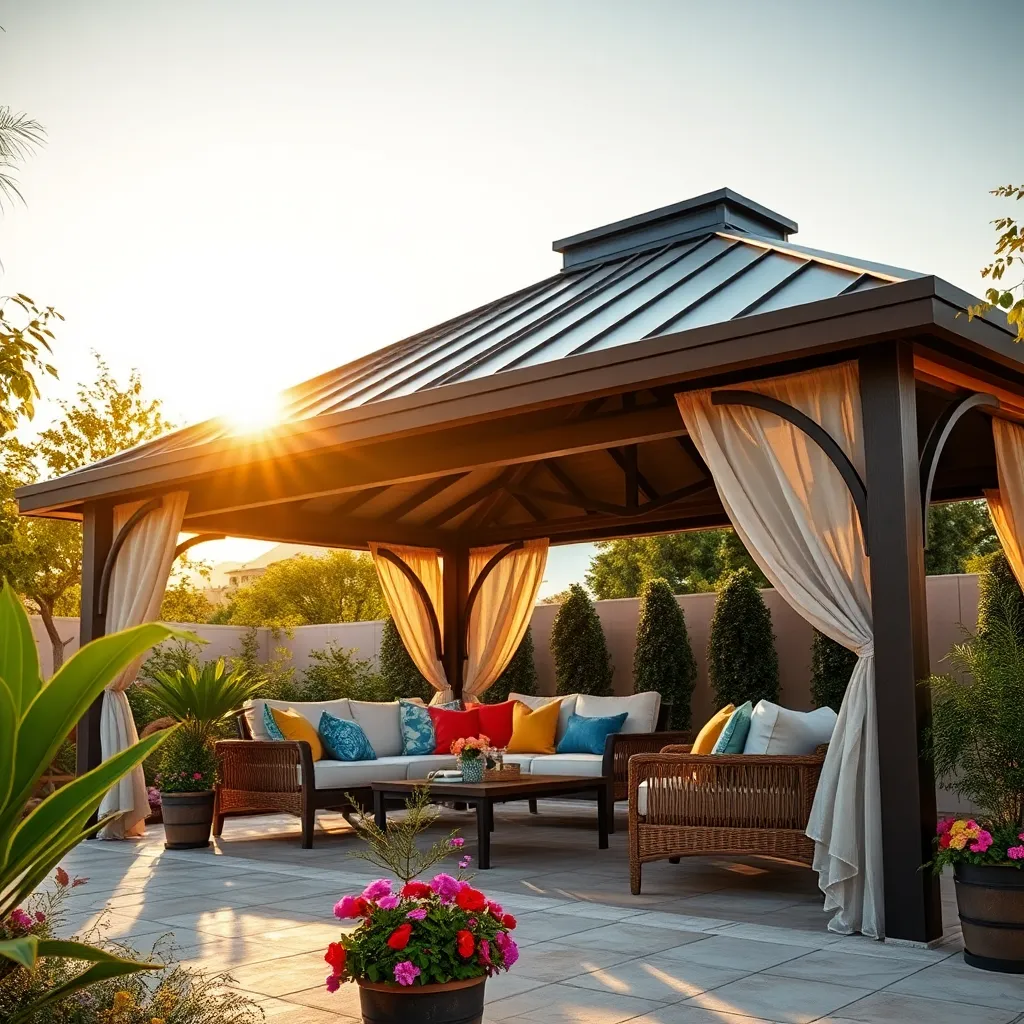
When designing a gazebo that can withstand the elements, choosing the right materials is crucial. Opt for weather-resistant woods like cedar or redwood, which naturally resist decay and insects. If you prefer metal, consider using aluminum or galvanized steel for their durability and rust resistance. Both beginners and experienced builders should ensure that all wood is treated, and metal components are powder-coated to further enhance longevity.
For the roof, select materials that will protect against rain and sun while offering aesthetic appeal. Polycarbonate panels are an excellent choice, providing UV protection and a sleek look. Alternatively, asphalt shingles offer affordability and are easy to install. Advanced projects might incorporate a standing seam metal roof for added durability and a modern touch. Regardless of your choice, ensure proper installation techniques, such as using corrosion-resistant screws, to maximize the lifespan of your gazebo.
Incorporate Built-In Seating Options
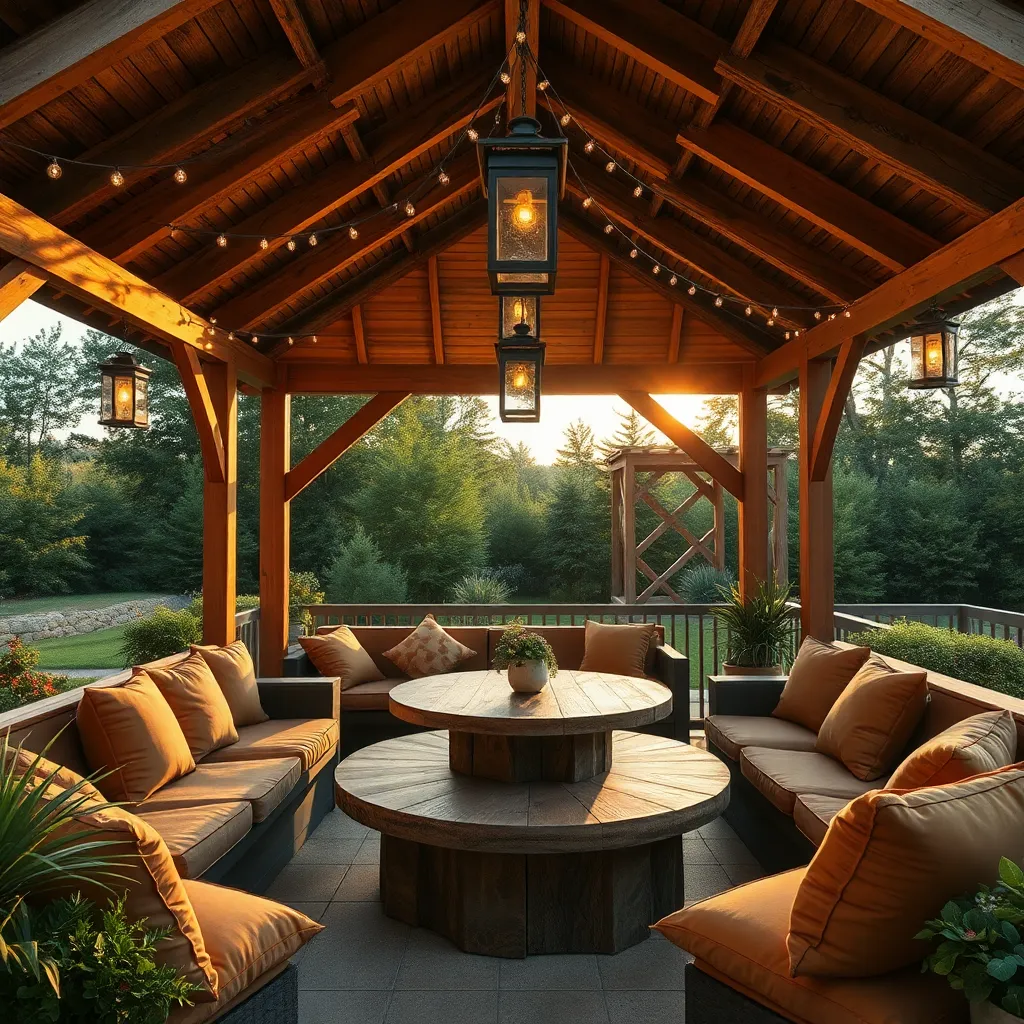
Integrating built-in seating into your gazebo design not only enhances comfort but also maximizes space. Consider utilizing durable materials like pressure-treated wood or composite decking, which offer longevity and resistance to the elements. For a basic setup, opt for a simple bench style, ensuring that the seating area is about 18 inches high and 15-18 inches deep for optimal comfort. Beginners might start with a straightforward design using pre-cut lumber, while more advanced DIY enthusiasts can experiment with curved or corner seating arrangements that mirror the gazebo’s shape.
For a more refined look, incorporate storage beneath your seating to keep cushions and garden tools tidy and protected. Use weatherproof hinges and latches to ensure easy access and longevity, even in damp conditions. To elevate the design, add cushions made from outdoor fabric, like Sunbrella, which resists fading and mildew. Advanced gardeners might integrate a small table into the seating area or consider installing a pergola-style roof over the seating for additional shade and privacy. By thoughtfully combining functionality and style, built-in seating can transform your gazebo into a versatile, inviting retreat.
Enhance Privacy with Lattice Walls
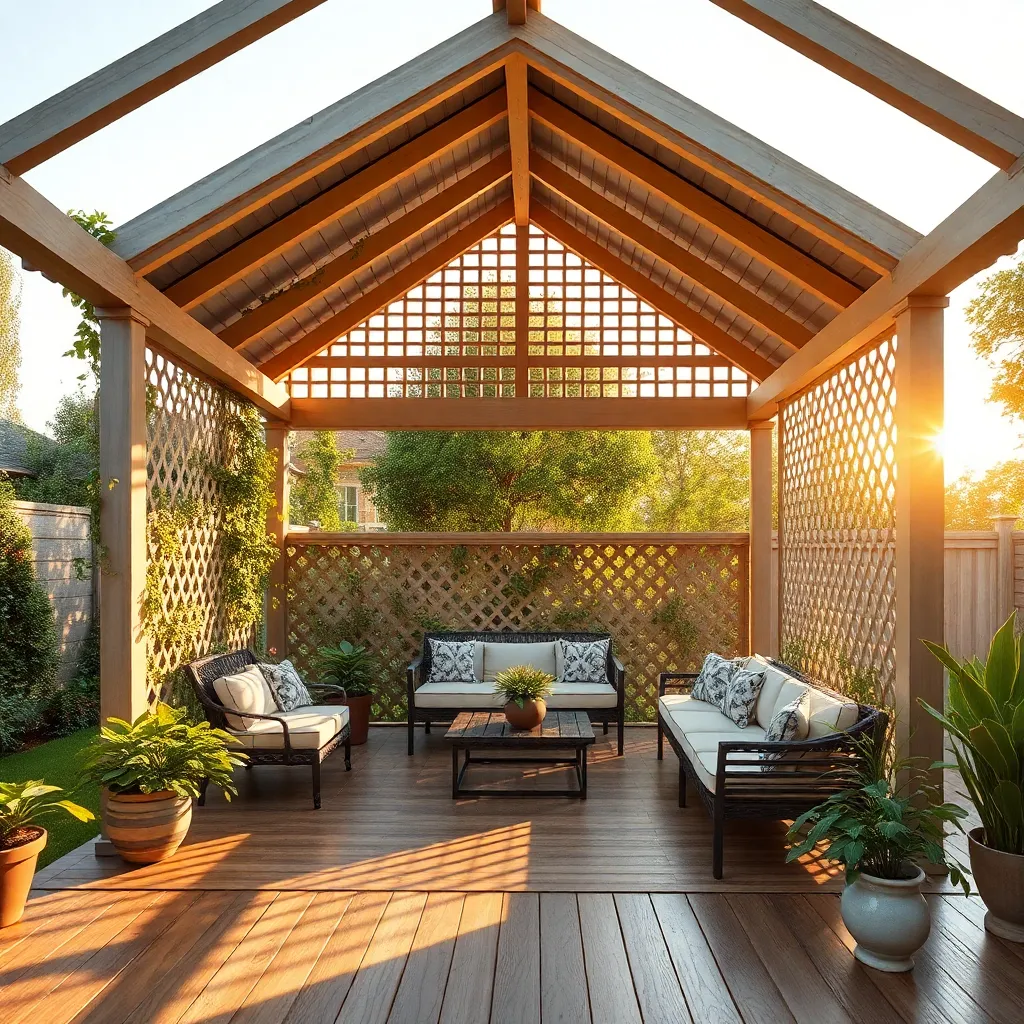
Lattice walls are an excellent way to enhance privacy in your gazebo while adding a touch of elegance. Opt for wooden lattice panels, which are easy to install and can be painted or stained to match your gazebo’s design. If you’re a beginner, use pre-cut panels available at most home improvement stores for a straightforward installation. Simply attach them to the existing frame of your gazebo using sturdy brackets or screws for a secure fit.
For those looking to elevate their privacy game, consider growing climbing plants like clematis or ivy along the lattice. These plants not only provide additional privacy as they grow but also bring a lush, natural element to your outdoor space. If you’re more advanced, custom-cut lattice panels using materials like vinyl or composite can offer a more durable solution against weather elements. Remember, spacing between the slats is key—aim for smaller gaps if privacy is your priority, typically around 1 to 2 inches apart.
Add a Central Fire Pit Feature
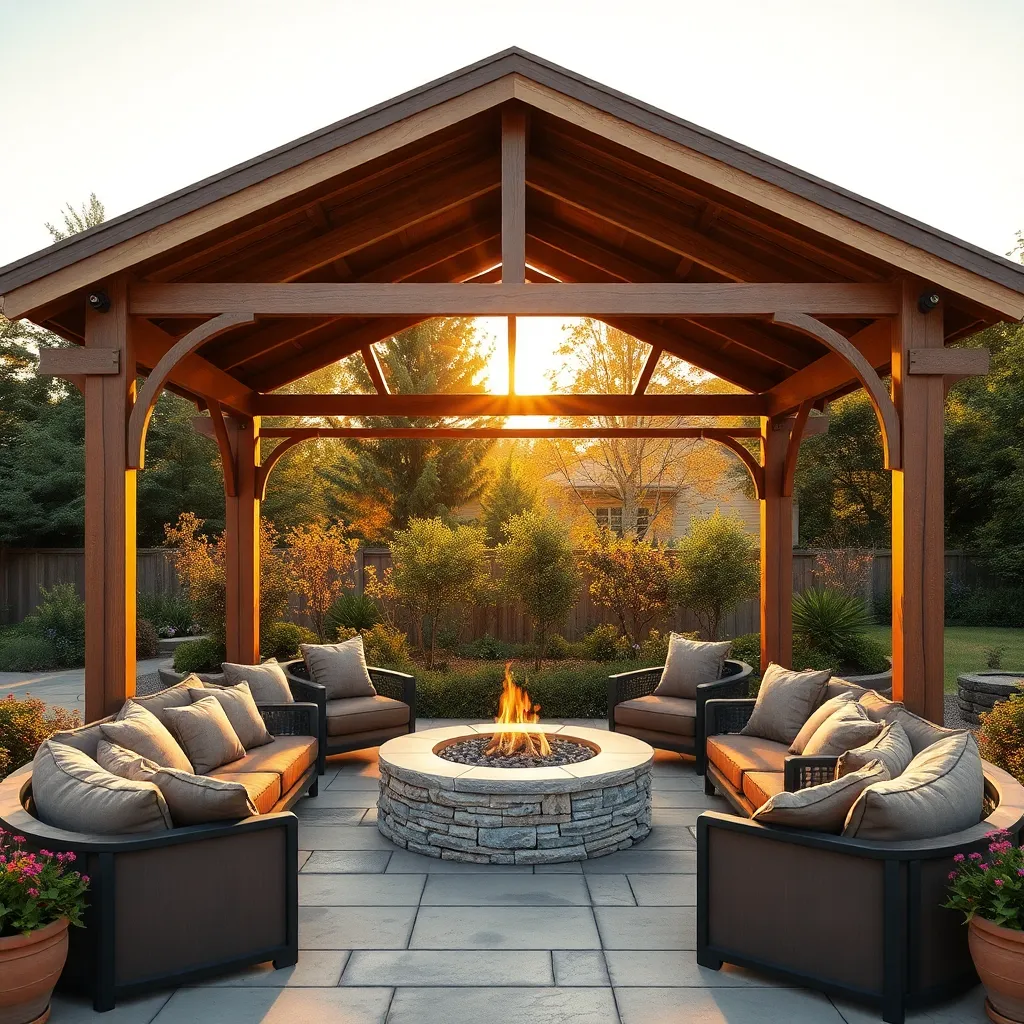
To elevate your gazebo’s ambiance, consider adding a central fire pit feature. This not only provides warmth but also serves as a focal point for gatherings. Opt for a fire pit that suits your style—whether it’s a classic stone design or a sleek metal option. Ensure it’s positioned safely with a minimum clearance of 10 feet from any structure or overhanging branches. For those new to outdoor projects, start with a simple, portable fire pit for flexibility. More experienced gardeners can explore custom-built options using materials like brick or concrete.
When integrating a fire pit, think about the seating arrangement that complements it. Arrange durable, weather-resistant furniture, such as teak or wrought iron chairs, in a circular layout to encourage conversation and comfort. Consider adding cushions with removable, washable covers for easy maintenance. Advanced designers might include built-in seating with storage underneath for a streamlined look. Remember to incorporate safety features, like a protective screen or spark guard, to ensure the fire pit remains a safe and inviting centerpiece for your gazebo.
Select a Color Palette Harmony
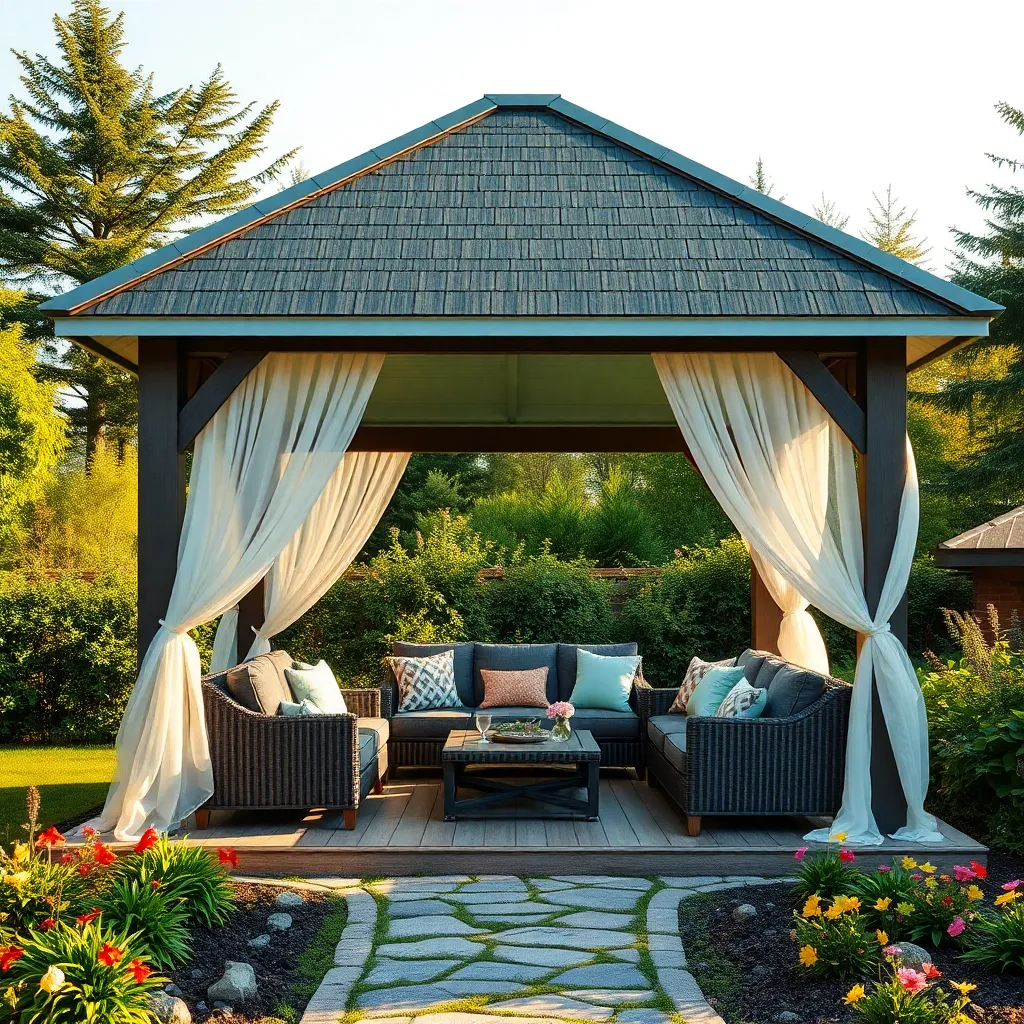
Choosing the right color palette for your gazebo can significantly enhance its aesthetic appeal and harmony with the surrounding landscape. Start with nature-inspired hues such as soft greens and browns to blend seamlessly with your garden. For a cohesive look, consider using weather-resistant paints or stains that complement your home’s exterior. A simple trick for beginners is to use a three-color scheme: one dominant color, a secondary shade, and an accent color to add depth and interest.
Experienced homeowners might explore more advanced techniques, like incorporating textured finishes or custom color blends. Experiment with natural materials like stone or wood for a rustic appeal, or metal accents for a modern touch. To ensure durability and vibrancy, opt for UV-resistant finishes that withstand weather changes. This strategic use of color not only beautifies your gazebo but also creates a welcoming retreat that enhances your outdoor living space.
Design Multi-Level Roof Structures
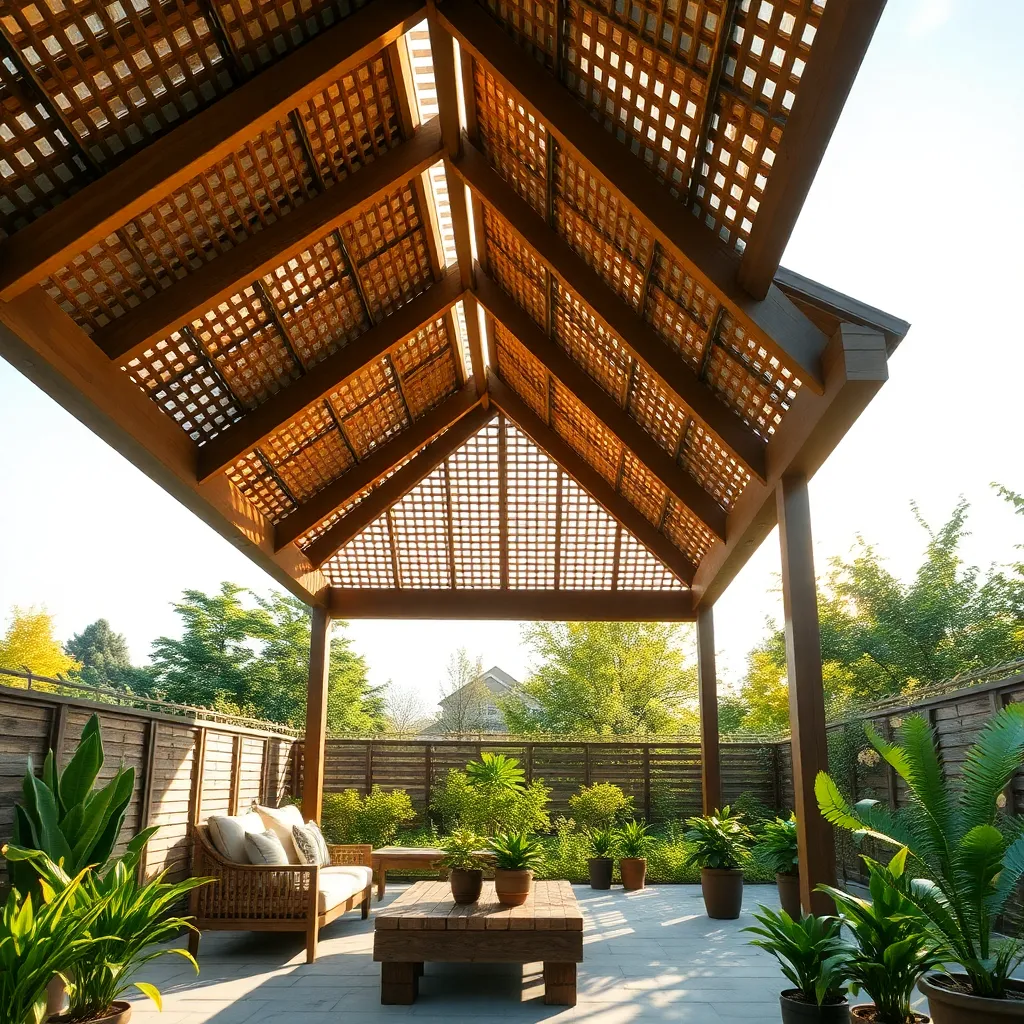
Designing a multi-level roof structure for your gazebo not only enhances its aesthetic appeal but also improves functionality by effectively managing rainwater runoff. Start by choosing durable materials like treated wood or metal for the framework, as these ensure longevity and stability. Consider incorporating translucent polycarbonate panels to introduce natural light without compromising on protection from the elements. For beginners, a simple two-tier roof with a gentle slope can be both manageable and visually pleasing, while more experienced builders might experiment with three or more levels, creating a dynamic and sculptural look.
When planning your multi-level roof, pay special attention to the dimensions and angles to ensure proper drainage and wind resistance. Advanced builders can use CAD software to model the roof’s structure, while beginners might rely on detailed sketches and measurements. It’s crucial to securely anchor the different levels using galvanized nails or screws, which resist rust and provide strong support. Don’t forget to add gutter systems to each tier to channel water away efficiently, thus preserving the structural integrity of your gazebo. With thoughtful design and construction, your multi-level roof will be a standout feature in your outdoor space.
Maximize Space with Modular Furniture
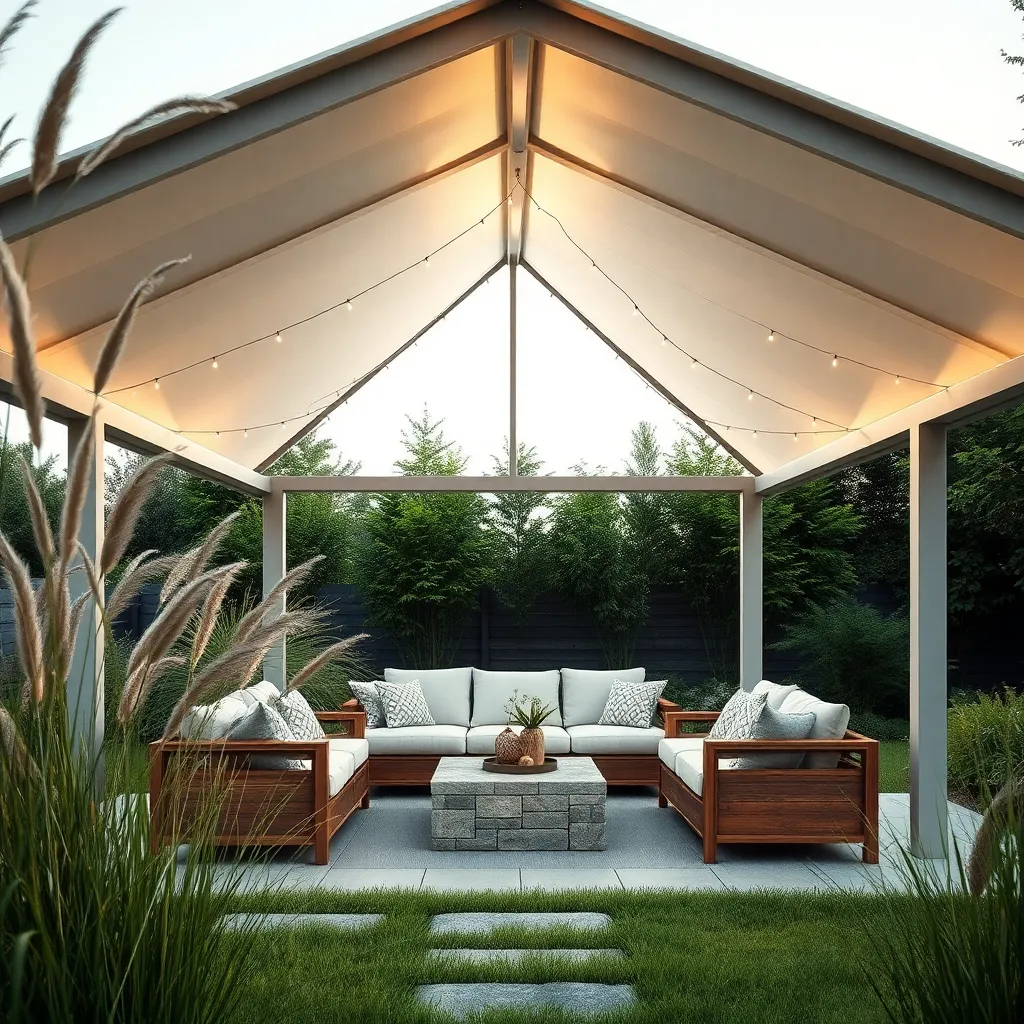
Transform your gazebo into a versatile space by incorporating modular furniture. This approach allows you to reconfigure your layout effortlessly, catering to various occasions or seasons. Opt for materials like weather-resistant wicker or teak, which not only withstand the elements but also add a touch of elegance. Beginners should start with a few key pieces like a modular sectional and a couple of multi-purpose ottomans, which can double as seating or tables.
For those ready to take it up a notch, consider investing in furniture with hidden storage to keep your gazebo tidy and organized. Look for pieces with adjustable features, such as a table that can transition from coffee height to dining height, maximizing functionality. Customizable cushions in durable, fade-resistant fabrics allow you to change the look with the seasons. This flexibility ensures your outdoor space remains inviting and functional all year round.
Install Adjustable Retractable Awnings
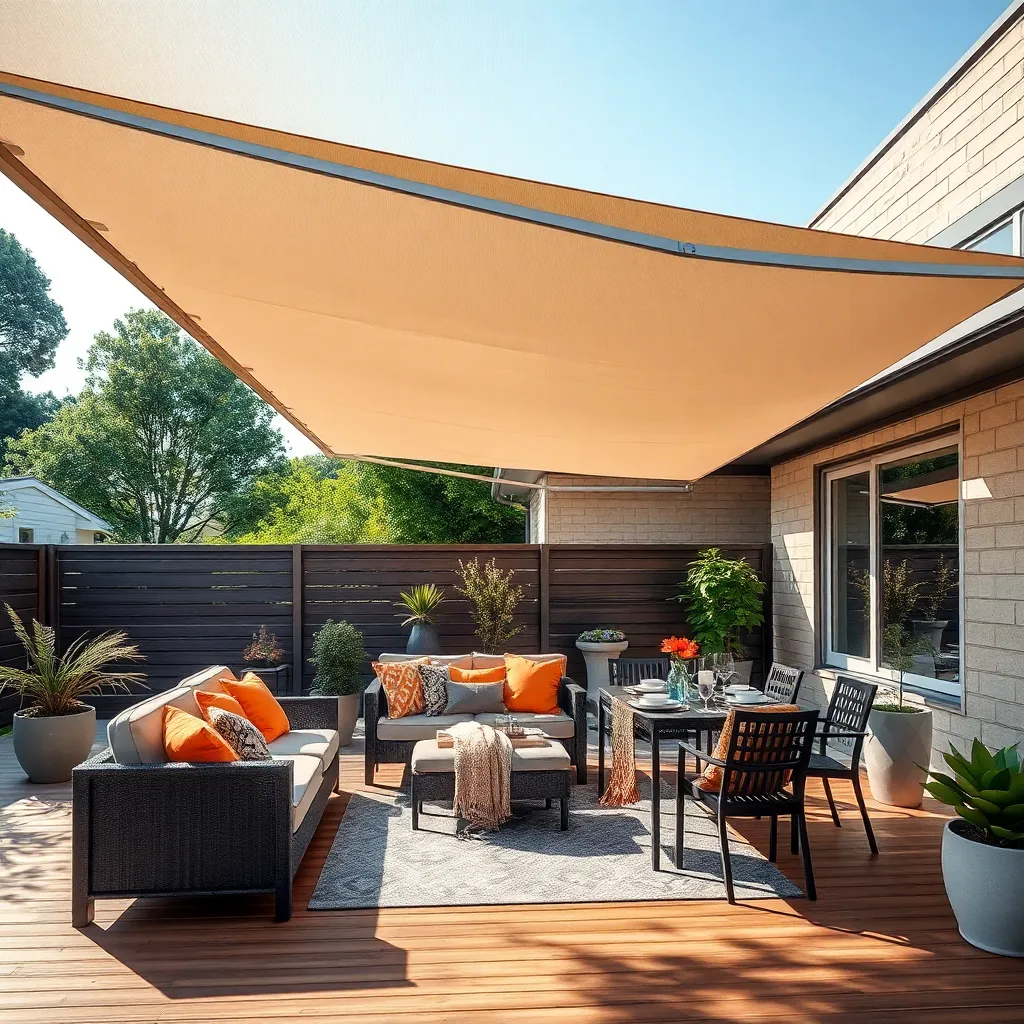
For a versatile and stylish addition to your gazebo, consider installing adjustable retractable awnings. These awnings allow you to control the amount of sunlight and shade with ease. Choose durable materials like aluminum frames and UV-resistant fabric to withstand various weather conditions. Ensure the awning size complements your gazebo dimensions, providing ample coverage without overwhelming the space. Beginners can start with a motorized option for ease of use, while more advanced DIY enthusiasts might prefer a manual system to fine-tune the installation.
Beyond functionality, retractable awnings offer an opportunity to enhance the aesthetics of your outdoor area. Select a fabric color and pattern that complements the existing design elements of your gazebo and surrounding landscape. For those seeking to add a touch of sophistication, consider incorporating integrated LED lighting for evening ambiance. When installing, make sure the mounting hardware is securely fastened to support the weight of the awning, ensuring both safety and longevity. With the right choice, you can enjoy a comfortable and stylish outdoor space year-round.
Integrate Solar-Powered Lighting
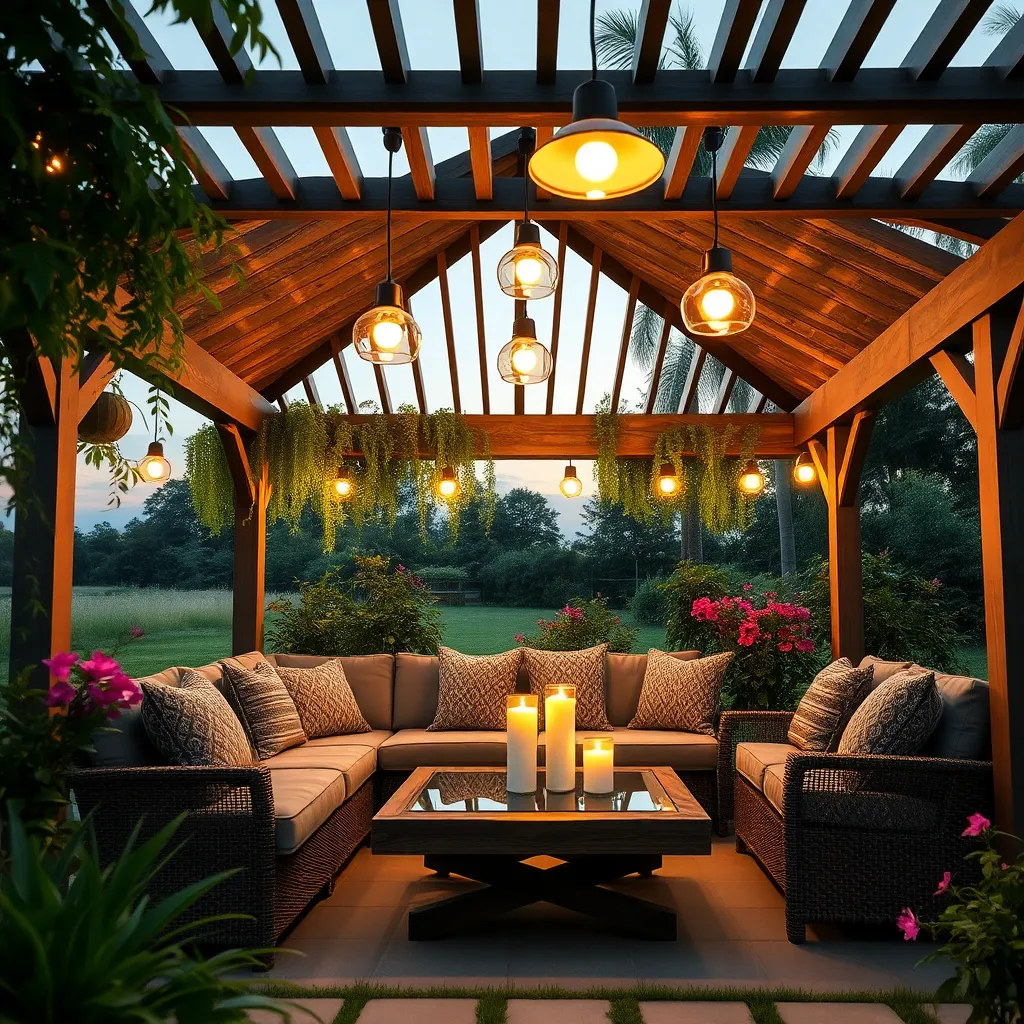
Incorporating solar-powered lighting into your gazebo design not only enhances its functionality but also adds a sustainable element. For beginners, start by selecting solar LED string lights, which are easy to install and provide a charming ambiance. Attach the lights along the gazebo’s beams or roof edges to ensure even illumination. Make sure to position the solar panel in an area that receives direct sunlight for at least six hours a day to keep your gazebo well-lit throughout the evening.
For those looking to take their solar lighting setup to the next level, consider integrating solar-powered lanterns or spotlights that can be strategically placed around the gazebo. These options offer more focused lighting and can highlight specific areas like seating arrangements or pathways. When selecting solar lights, opt for models made with durable materials, such as weather-resistant metal or high-grade plastic, to withstand outdoor conditions. Additionally, investing in lights with a dimming feature can provide versatility for various mood settings and occasions.
Utilize Vertical Garden Features
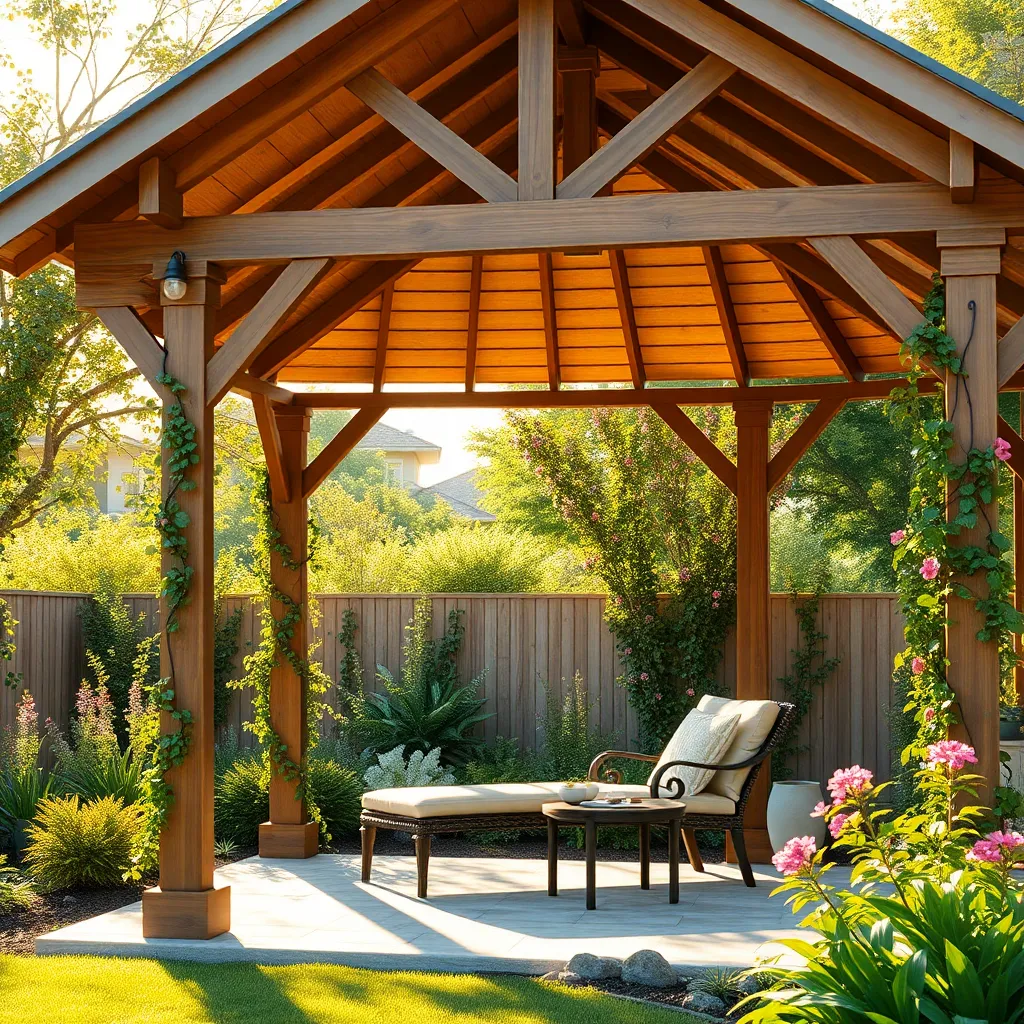
Maximize the space around your gazebo by incorporating vertical garden features to add a lush, green element that enhances privacy and aesthetics. Consider using sturdy materials like metal frames or treated wood to construct vertical planters that can hold an array of plants such as herbs, succulents, or flowering vines. For beginners, start with simple vertical garden kits available at most garden centers, which often include modular sections and built-in irrigation systems for easy maintenance.
For those looking to add a sophisticated touch, integrate climbing plants like clematis or jasmine, which not only add natural beauty but also emit pleasant fragrances. Use wire mesh or lattice panels as a support structure, ensuring they are securely anchored to withstand wind and rain. Advanced gardeners might explore creating a living wall with automated watering systems, allowing for lush greenery without the hassle of daily watering. With careful planning, vertical gardens can transform your gazebo into a serene oasis.
Conclusion: Creating Beautiful Outdoor Spaces
As you embark on the journey to enhance your outdoor space, these 10 gazebo design ideas serve as a metaphor for nurturing your relationships. From embracing open communication like a breezy open-air design to the cozy intimacy of a secluded nook, each concept reflects a key relationship principle. Consider the importance of balance, as seen in symmetrical structures, or the creativity sparked by unique, personalized touches. Just as a gazebo provides shelter, your relationships thrive under care and attention.
To translate inspiration into action, choose one design idea that resonates with you and discuss how it mirrors an aspect of your relationship. Whether it’s planning a cozy corner for deeper conversations or creating an inviting space for gatherings, let it guide your next relational step.
Bookmark this article as a resource to revisit each concept when you need a gentle reminder of the foundations of strong relationships. By applying these design principles to your personal connections, you’re not just building structures—you’re crafting a future of relational success. Remember, each step you take today is an investment in the vibrant, enduring relationships of tomorrow.
